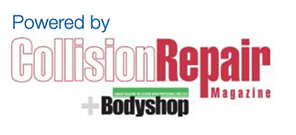After experiencing a car accident, it’s crucial to understand the importance of the Advanced Driver Assistance Systems (ADAS) in your vehicle and why they need to be accurately calibrated both before repairs begin and after they are completed. ADAS technologies, encompassing both active and passive systems, play a vital role in enhancing safety on the roads by helping to prevent further accidents. Regardless of the accident’s severity, ensuring these systems are accurately calibrated is essential for their effectiveness and your safety, as more people are relying on them now more than ever.
Understanding ADAS and Its Importance Post-Accident
ADAS technologies are divided into two main categories: active and passive systems. Each plays a critical role in enhancing vehicle safety, but they function differently.
- Active ADAS systems proactively work to prevent accidents. They utilize advanced sensors and algorithms to monitor the surroundings and can take control of the vehicle to avoid potential hazards.
- Passive ADAS systems, on the other hand, focus on alerting the driver to dangers. They provide auditory, visual, or haptic feedback to encourage the driver to take corrective action.
Why Calibration is Crucial
After an accident, it’s possible for the sensors and cameras that these systems rely on to become misaligned, even in minor collisions. This misalignment can significantly reduce the effectiveness of both active and passive ADAS, potentially compromising your safety and that of others on the road.
Examples of ADAS Technologies
- Lane Departure Warning and Forward Collision Warning are examples of passive systems that alert drivers to potential issues, like drifting out of a lane or approaching another vehicle too quickly.
- Automatic Emergency Braking and Lane Keeping Assist are active systems that can take action, such as applying the brakes or steering the vehicle back into the correct lane, to prevent accidents.
The Process of ADAS Calibration
Calibration ensures that ADAS sensors and cameras are accurately aligned and functioning correctly. This process is necessary both before any repairs are made to ensure the systems are correctly diagnosed and after repairs are completed to ensure they are fully operational. Proper calibration is essential for maintaining the safety features of your vehicle, ensuring that it can protect you effectively on the road.
The Bottom Line
Understanding the role of ADAS in your vehicle and the importance of post-accident calibration is crucial for every driver. These systems significantly contribute to road safety, helping to prevent accidents and save lives. Ensuring that your vehicle’s ADAS are accurately calibrated and maintained is not just about vehicle care—it’s a critical step in safeguarding your journey on the road. After an accident, prioritize ADAS calibration to maintain these vital safety features’ integrity and functionality.
Scans at a glance:
- Modern vehicles are full of “Electrical Control Units,” or ECU’s. These are computers that control aspects of your vehicle’s operations.
- Part of the repair process is running a “scan,” where these ECU’s are asked if everything is in working order.
- If everything is not in working order, an error code will be given.
- These error codes help in diagnosing issues with vehicles that have been in a collision.
- After all of the work is done, the vehicle is scanned again to see if everything is working.
- Sometimes the sensors in the ECU’s need to be re-calibrated, so that the vehicle “knows” it’s been repaired and everything is fine.
- Other times, this points to other issues that may have been missed, thus helping to ensure that everything has been repaired.
When you bring your vehicle in to be repaired, part of the process is that it goes through a series of “scans”. Modern vehicles are full of computers called “Electrical Control Units,” or ECU’s. ECU’s are becoming increasingly complex, and newer vehicles can have up to 100 million lines of code. These computers regulate, monitor and control a network of systems inside your vehicle, and an essential part of modern vehicle repair is asking these computers what they have to say both before and after the repair.
Before repairs get started, a “pre-scan” is performed. The pre-scan essentially asks the network of computers on-board your vehicle which parts and processes of it are working fine, and which are not. This doesn’t replace an actual physical inspection of the car, but it helps point the people working on your vehicle in the right direction by eliminating a lot of the guesswork. It’s analogous to a pre-flight check that a pilot will do before taking off. The scan checks every process, one by one, to see if everything does what it’s supposed to do. Because it’s a computer performing the scan, it can check thousands of processes very quickly. This in no way reduces the value of an experienced professional inspecting the vehicle themselves, and the data that the pre-scan spits out would be useless without an experienced technician to interpret it.
The post-repair scan is performed for quality control reasons. Basically, you perform the scan, running through all of the processes in the vehicle looking for error codes. In ideal conditions, all of the error codes captured during the pre-scan are identified and cleared at this point, and the vehicle is back to its pre-collision state both physically and digitally. Sometimes, a test drive is required before clearing some codes that only appear after traveling a certain distance. If the vehicle is in perfect working order, and is still issuing diagnostic trouble codes, this may point to a problem with the diagnostic processes themselves. Identifying and correcting these issues can prevent unnecessary trips to a repair shop.
This takes us to the Post-Repair Calibration/Initialization (PRC/I) stage of collision repair. Some of the electronic systems used for diagnosing problems need to be reset in order to function properly after you pick your vehicle up. Your vehicle doesn’t “know” it’s been repaired, it just knows what specific sensors are telling it. Some of those sensors need to be reset so that the information they report is accurate. Furthermore, some of the sensors themselves might have been damaged during the collision, and this process ensures that they are functioning properly as well.


